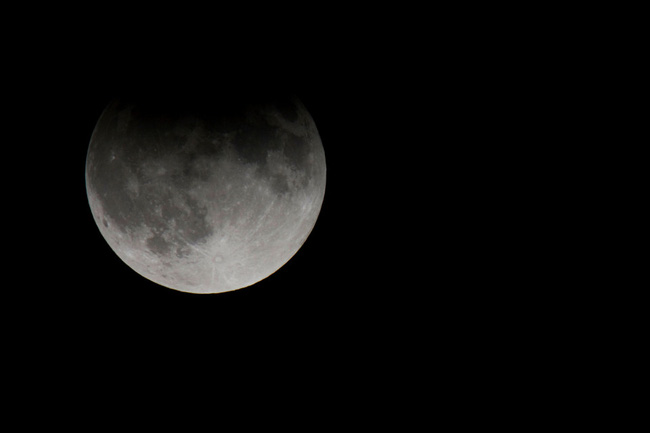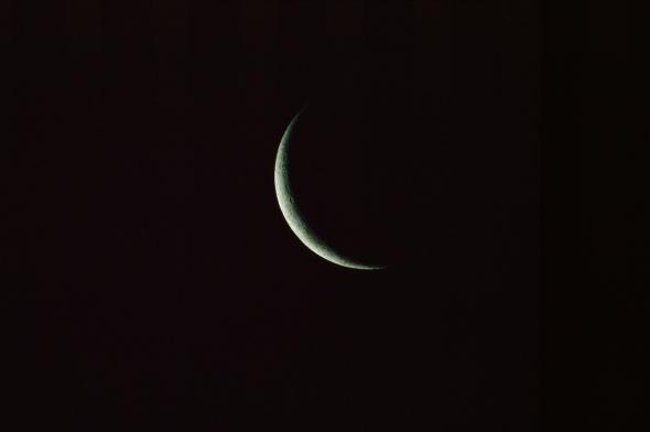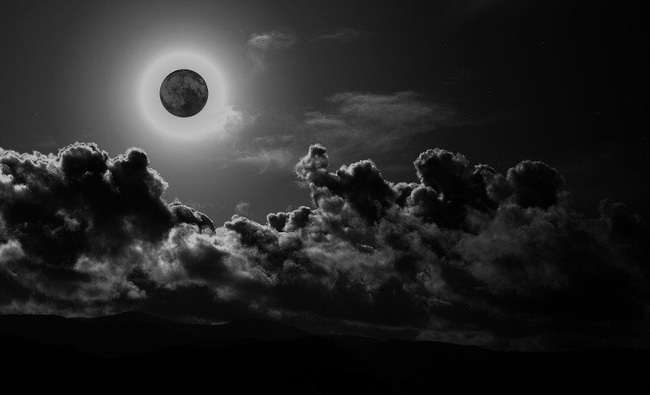The extremely rare astronomical phenomenon 'Black Moon' will appear tonight
The sky today ( Friday, September 30 ) is an unusual lunar event in the Western hemisphere : the second new moon appears in the same month - it is called " Black moon ".
During the full moon, which is mentioned at this time, it occurs when parts of the Moon shine, falling into the shadow of the Earth. Therefore, the Moon will disappear completely in the sky and make the night appear no light at all. A few days later, you will see a crescent-shaped silver moon appear in the sky.
The lunar calendar almost coincides with the solar calendar of the Earth, the special thing here is that every month there will be a full moon and a new moon.The second full moon in a month is also called the Blue Moon . The Black Moon is said to be the back of the Blue Moon: the second new moon in a month. The next Black Moon this month will appear today in the western hemisphere.
Black Moon (Black Moon) in some parts of the world
In the Western Hemisphere, the new moon will appear today, Friday, September 30, called the Black Moon. Officially, the Black Moon will appear at 8:11 pm in the Eastern time zone (5 hours 11 minutes Pacific time).
 A pair of binoculars or small telescopes, many features can observe the moon.Photo source: Karl Tate, SPACE.com
A pair of binoculars or small telescopes, many features can observe the moon.Photo source: Karl Tate, SPACE.com
In the Eastern Hemisphere ( Europe, Africa, Asia, Australia ), the new moon will appear in the middle of the night according to the calendar on the morning of October 1. Therefore, these areas of the world, the new moon This particular will not be the second new moon in the same month, rather it is the first new moon of the month! Therefore, it is not considered the Black Moon and in the hemisphere it will have to wait until the end of the month to appear the second new moon. In fact, for billions of people living in the Eastern Hemisphere, the Black Moon will happen on October 30 or if you live in eastern Asia, Japan, Australia or New Zealand, there is no need until October 31 ( Halloween ).
Black Moon is an " unusual " celestial event - occurring every 32 months.

The Black Moon phenomenon ( Black Moon ) may or may not be observable
At the "new moon " stage, the moon is completely black. It appears around that time of the month when the moon passes through the same part of the sky that the sun also passes, the dark side of the moon or the Earth's face is not illuminated. Therefore, this is really impossible to observe.
In fact, that is not always true, because there are times when the moon passes directly between the Earth and the sun, then Earthlings can see the black silhouette of the face. The moon passes right in front of the sun, causing an eclipse. In fact, that's really what happened with the first new moon that appeared in the month of September 1, creating an annular eclipse ( also called the "eclipse ring" ) going through the parts. of Africa.
Wait for the crescent moon

If you still wonder about the origin of the term "new moon ", it is simply the beginning of a new moon cycle. The period between two successive new moons is called the moon month ( synodic month ), - the average lasts about 29.53 days. This is the moon phase, because the moon's appearance depends on the position of the moon when viewed from the Earth. The word " synodic " is derived from the Greek word " sunodikos " - meaning "meeting" for the new moon, the moon " meets " the sun.
But not like a "super moon " but by countless people looking for a suitable place to be able to see the full moon brighter and brighter. With Black Moon, it's simple that you can't see it. In my opinion, this is the main reason why the Black Moon is difficult to become a popular traditional name.
However, two nights later, on October 2, you can see a low crescent moon on the western sunset sky lasting about 30 to 40 minutes after the local sunset time. That also marks the beginning of Rosh Hashanah - 5777 Jewish year. The following day (October 3) is the 1438 New Year of Muslims and the first day of Muharram , the first month in the Islamic calendar.
Some people often mistakenly mention the appearance of any thin crescent moon like "new moon ". This way of reasoning has even spread to "popular" literature. In the sci-fi book " A Night to Remember " about the sinking of the Titanic, author Walter Lord cited a firefighter on board rescuing - who saw the moon. Crescent shape in the dawn sky and exclaim: "The new moon !"
A note about branding
As a person who has been involved in broadcasting for nearly 40 years, I want to let you know that we lived during the time when new media seemed to be obsessed with " branding ". . This marketing campaign involves creating different images and brands - often using a slogan - to build an impressive image in people's minds.
In recent years, for example, in the field of astronomy, we have observed the annular eclipse phenomenon - cases where the moon is too small, covering the entire disk of the sun - named is "Eclipse eclipse." The moon's total solar eclipse is when the moon lies in the darkness of the Earth causing satellites to turn red copper - now called the Blood Moon .

When the full moon passes through its orbit, bringing it back to the closest point to Earth - the point in satellite orbit - called " super moon ". In fact, the phrase was set by an astrologer in 1979 but was quite surprising to become a very popular media brand after appearing the closest approach to the full moon to Earth in March 2011. It surprises me, even now NASA has confirmed that phrase, although it seems to help me get to the astronomical community as a whole, which is far from the point of any point near the full moon like " super ".
Then there is the Blue Moon ( Blue Moon ). This nickname was put by a writer of Sky & Telescope Magazine , he misunderstood a complex definition given by the New England Almanac " no longer exists " when the full moon was named " green " and replaced There, an incorrect reason that in a month there are two full moon, the second full moon is called the Blue Moon. It was a name that had not been noticed for the past 40 years, until a syndicated radio program initiated this phrase in the 1980s and was later spread. So now even though the second full moon in the month is no longer the same as the original definition for the Blue Moon anymore, in today's popular culture we combine the second full moon in the month with the Blue Moon.
So its latest name is Black Moon (Black Moon) .
You should read it
- Detecting the second Moon of the Earth, the diameter is only about 3.5m
- True moon, snow moon and comet will appear together today
- Why is the Moon red like blood when the total lunar eclipse occurs?
- Discover incredible facts about the Moon
- Why is the moon glowing?
- Full Moon facts - Full moon you may not know yet
 Is Elon Musk's plan to send people to Mars feasible?
Is Elon Musk's plan to send people to Mars feasible? Learn about the secret of Mercury formation
Learn about the secret of Mercury formation Space Science: The order of 8 (or 9) planets in the Solar System
Space Science: The order of 8 (or 9) planets in the Solar System New SMASH 1 satellite discovered in the large Magellan cloud
New SMASH 1 satellite discovered in the large Magellan cloud Space scientists will use 'scanning electron microscopes' to find biological samples on the Red planet
Space scientists will use 'scanning electron microscopes' to find biological samples on the Red planet The number of galaxies in the universe is 10 times more than what astronomers thought before
The number of galaxies in the universe is 10 times more than what astronomers thought before